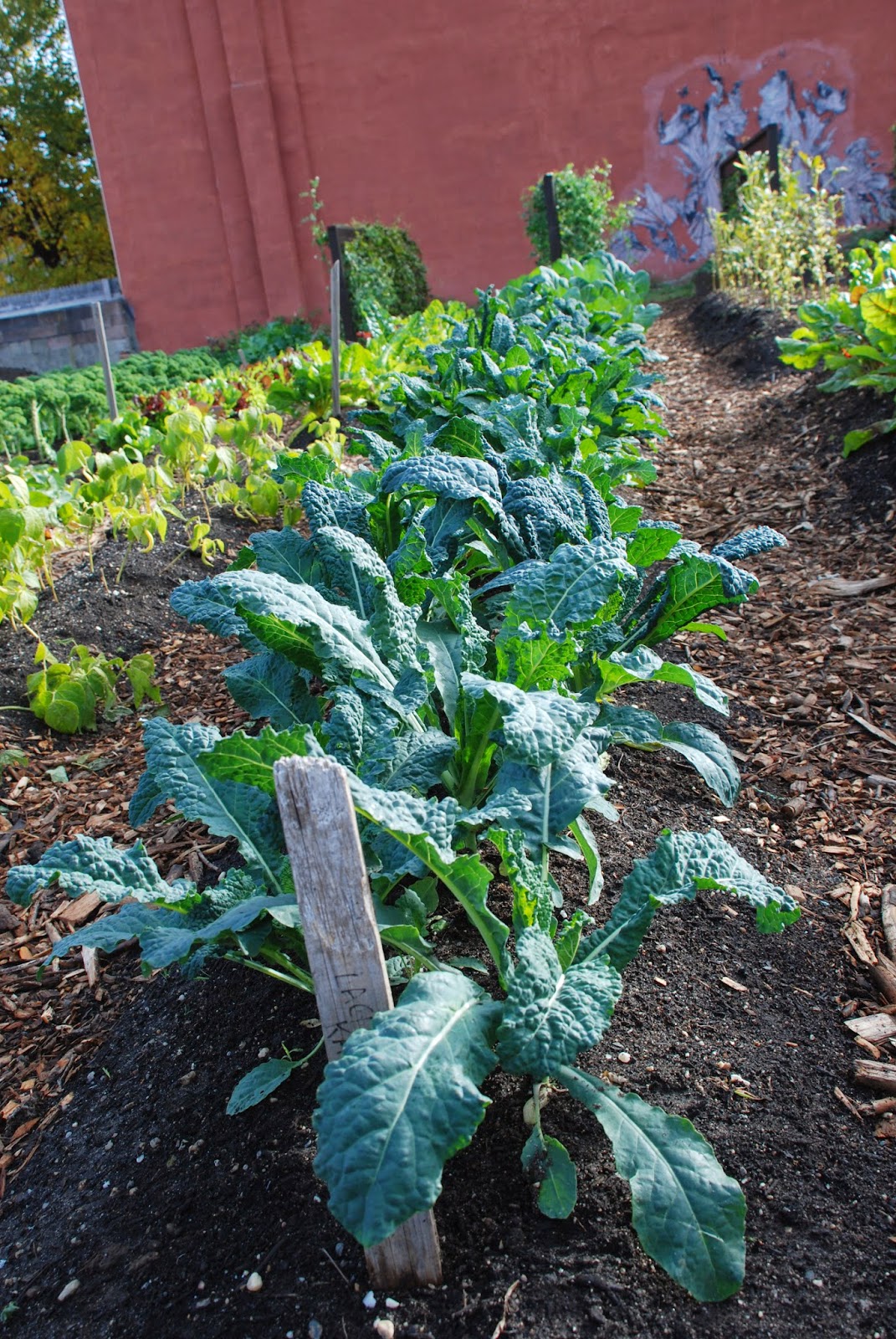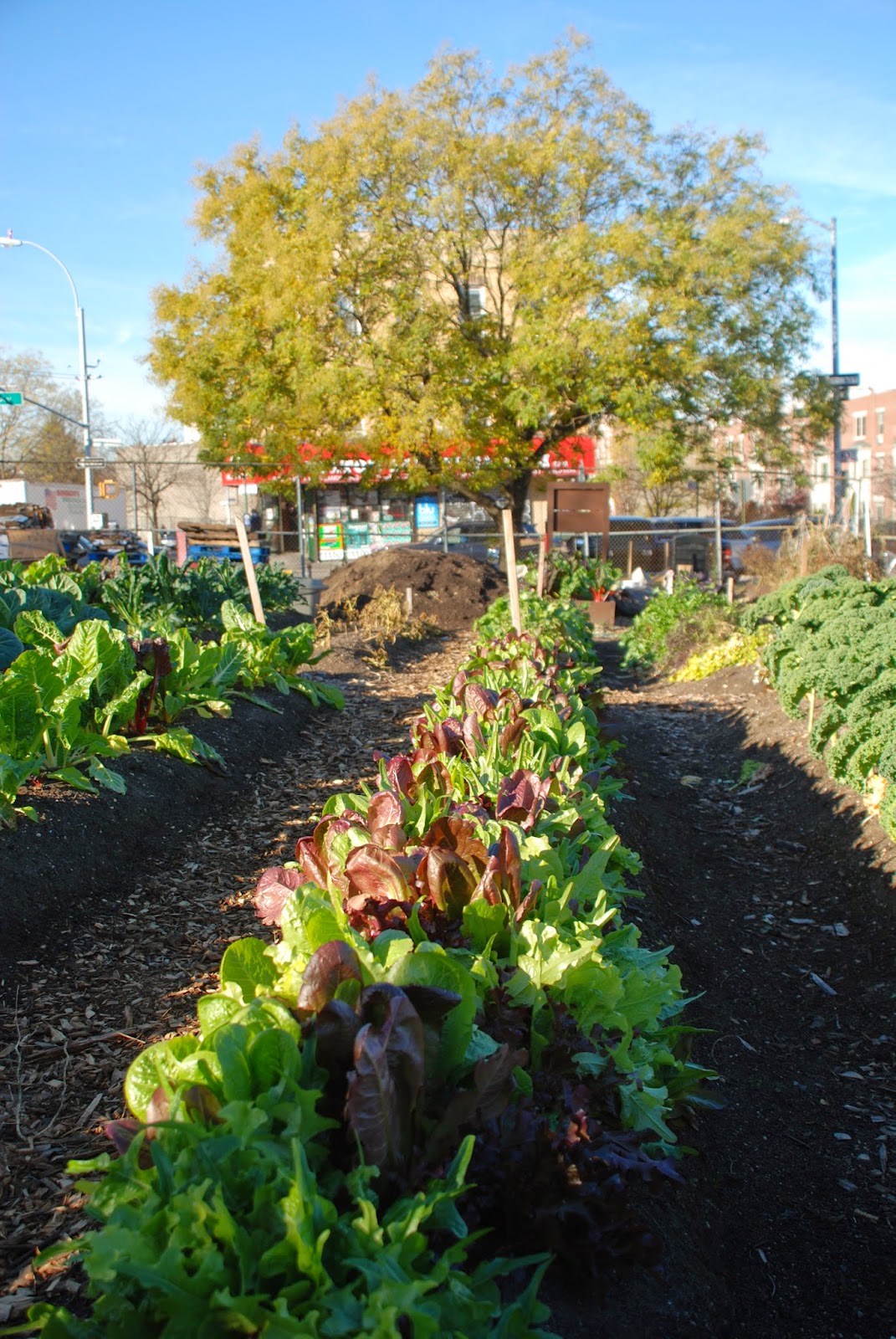Last fall we learned that another food-justice focused organization would fund a hoop house if we host a volunteer event. I was thrilled, looking forward to the construction and then our winter gardening. Then, I found out that the event could only be scheduled on January 20, to coincide with the Martin Luther King Day of Service. My initial reaction was "Hell no! Is people crazy?" but soon after I figured that there's no downside. I think it was understood, although unstated... if there's a terrible blizzard on January 20, the equipment will still be ours and the event would be postponed. It's not like we would be forced to put volunteers on high ladders with power tools, during a 20 degree, windy snow storm. So, I agreed to run a big volunteer event in the middle of the winter, risk and all. Anyway, we tend to have just as many cool January days in the 40s, as in the teens. Brooklyn is not my native Chicago, where no outdoor event would be planned for January. The catch was, that I was responsible for getting the ground ready for January 20, whether or not the weather would eventually allow for the event to go on.
Early January saw the so-called Polar Vortex. Some people thought we couldn't do any work because the ground would be frozen solid. But, as soon as the first post-vortex thaw, we got on it. Time was a ticking. I also learned was that if the top part of the ground is frozen, a few inches below is softer. A little pick axing can solve the problem.
After choosing an ideal location and roughly measuring out the 36' x 20' foot print, a good crew of helpers and I began removing the rows of soil (every day that the weather allowed). Then, we peeled back the landscaping fabric. Soon, we had a clear space, apart from the four wooden raised-beds, which we would work around.
 I used a string level to see how much we needed to flatten the area, and it turned out that we were indeed on a big slant, in both width and depth. So, the goal was to remove around 6-12" of base soil at the upper edges, and gradually fill it in at the lower edges.
I used a string level to see how much we needed to flatten the area, and it turned out that we were indeed on a big slant, in both width and depth. So, the goal was to remove around 6-12" of base soil at the upper edges, and gradually fill it in at the lower edges.
Unfortunately, that strategy proved more difficult to achieve. Under each layer of soil and clay, there were tons of bricks, rocks, larger boulders and concrete. The new strategy was to sink the upper posts a little deeper, and the lower posts a little shallower (and that remaining space will be filled in later). The fourteen posts are 3' long, with 2' supposed to be driven into the ground. There is enough room to make the above adjustments and still have a secure structure. The posts would all be level, even if the base ground isn't.
Soon after we began breaking ground, our hoop house arrived! This 800 lbs package was shipped from Iowa.

One of my early tasks was to take inventory of all parts, big and small, to make sure we aren't short of any essential components on the big work day.
 |
| More ground leveling... |
 |
| First corner post driven into the ground! |
 |
On the Sunday before the big work day, we had a good group of volunteers come to drive in the final posts. All the measuring was done, but still a full day of hard work.
 |
 On Monday, my carpenter friend returned to run the crew. The volunteer group of around fifteen people was very good, each taking their delegated tasks. Here is the first hoop set in place. Our good placements of the base posts, proved to be fine so far, as everything fit. Before the second hoop was joined at the top to the first, we needed a lot of people (and ropes) to hold it in place.
On Monday, my carpenter friend returned to run the crew. The volunteer group of around fifteen people was very good, each taking their delegated tasks. Here is the first hoop set in place. Our good placements of the base posts, proved to be fine so far, as everything fit. Before the second hoop was joined at the top to the first, we needed a lot of people (and ropes) to hold it in place.  |
| Once two hoops attached, the rest easy... |

By the end of the work day, most of the main structure was completed. All seven hoops, plus the straight bars (called "purlines") were up. Now, it seemed that we just needed a few hours of warm weather to complete the project.
The day after our work day, there was a blizzard. We totally lucked out with the three previous days being "okay" weather, cold and breezy but dry.
Over the next month or two, I tried to get out there with a few people to add the remaining components before the plastic.
 |
| ribbon boards attached. |
 |
| Ribbon boards and u-channels above, base boards below |
The next step was to attach the base boards. These don't provide much structural support, but they form a horizontal support to prevent the base poles from sinking in the ground. Kind of like a wide snowshoe. They also help seal the side walls from wind. We used some re-purposed scaffolding boards.
 |
| The plastic film, as it came in the original packages. |
 |
| First piece of plastic being attached! |
Finally in mid-April, the carpenter returned with his 10' ladder and he helped us install the end walls. Another full day for five or six people on a Sunday. We probably could have done this a bit earlier, but the winter was a bit too intimidating for me to push for anything more than small incremental steps. Once we opened the plastic, it really had to git done...
 Finally some visible progress! Huge relief. Now we have one end wall attached, sans door, but it's a start.
Finally some visible progress! Huge relief. Now we have one end wall attached, sans door, but it's a start.
One more thing accomplished on that Sunday, was that
we installed another set of u-channels. Once we installed the
end walls, which were attached by metal clips and screws, we attached
the u-channels right on top of the clips and plastic, on the
upper-center edge of the two outer hoops. The method is that
the plastic cover will be attached to a continues line of u-channels,
covering the two outer round hoops, and the 36' straight, horizontal
ribbon boards (4.5' above the ground). The remaining flaps of
the cover will be secured by a roll-up mechanism, so can be opened or
closed. The aluminum u-channel material is soft enough to bend
to the contour of the hoops.
 |
| End walls! |
We removed all sharp rocks and twigs, and laid out cardboard on the ground adjacent to one of the side walls, so the plastic won't get ripped. Then, we rolled out the film along that area.
 |
| The plastic cover is gently set in place |
We added three squares of Gorilla Tape as a reinforcement, and then cut a hole and tied ropes to the two end corners and one center edge of the plastic. I was hoping that these would be strong enough to hold as we hoist the film over the top.

Three ropes were thrown over the top purlines. Then, we had several people feed the plastic over the top, while three people "gently" pulled the ropes. All three ropes did eventually tear their piece of Gorilla Tape and plastic, but we went on ladders to reattach.

 As the plastic got stuck, two of us were on the ladders to fix or push it along. With only one 10' ladder and one 8', we had to constantly move the ladders horizontally to cover the 36' length.
As the plastic got stuck, two of us were on the ladders to fix or push it along. With only one 10' ladder and one 8', we had to constantly move the ladders horizontally to cover the 36' length. 
We also prodded the plastic up and over using the round, handle ends of shovels. Once over the top purline, the rest was easy. Before this point, each of the three ropes snapped, but cutting a new hole and re-attaching was easy from the ladders. We had enough slack at the end of the cover, so a little damage on the final two inches wasn't a huge deal. After more prodding, tugging, pushing and pulling, the cover was over...
 |
| Cover is finally over-the-top! |
 The next step, while volunteers were
still available to hold down the corners, was to get on the upper peak
of one edge hoop, and attach the initial spring. The plastic
gets wedged into the u-channel, and the spring pushes outwards,
keeping it in place. We followed the instructions, attaching springs in a continuous pattern, from one upper peak, outwards, and then the horizontal
u-channels connected to the ribbon boards (4.5 feet above the base
boards). Any extra slack would be bunched together in a corner.
The next step, while volunteers were
still available to hold down the corners, was to get on the upper peak
of one edge hoop, and attach the initial spring. The plastic
gets wedged into the u-channel, and the spring pushes outwards,
keeping it in place. We followed the instructions, attaching springs in a continuous pattern, from one upper peak, outwards, and then the horizontal
u-channels connected to the ribbon boards (4.5 feet above the base
boards). Any extra slack would be bunched together in a corner.After all springs secured the perimeter of the cover, the next step was to connect the 36' poles (which were structurally the same as purlines, made of six 6' poles screwed together) to the edge of the covers. These were clipped and screwed to the far edges of the two side flaps. A handle was attached to an end of each side 36' pipe, which allows us to roll up the side flaps when needed. Below is how our hoop house will appear during the summer months.
 |
| Sidewalls in "up" position. During the summer, we will tie up the opposite end, so there's no sagging. |
So, we finally have a hoop house that's up-and-running. There are a few more small things need to be added, such as the anti-billow cords on the sides, and then before November we're going to add a wooden frame to help support the end walls, plus we may add storm-doors for easy exit and entry. For now, we will soon prepare the inside for growing. We'll add more rows of soil, and also set up shelves and a table for some late seed starting. We will also plant tomatoes a few weeks earlier than those that will be planted outside.
It would have been nice to have this hoop house up by early March, but we did our best. Next Fall and Winter will be great. For spring of 2014, we will still get some nice use, but I really look forward to the coming fall, winter and early spring. There will be no more "off-season" on our small farm in Brooklyn.
 |
| Now we need to organize the inside, add more rows and start planting... |





























